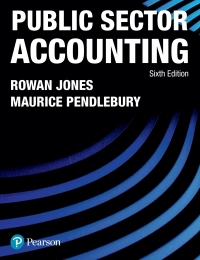Question
Describe what you learned from the reading and how you can use the reading for a business plan and as an entrepreneur in the future.
Describe what you learned from the reading and how you can use the reading for a business plan and as an entrepreneur in the future.
COMPANY FLEXIBILITY
In rapidly changing global markets entrepreneurs who want to be successful and stay competitive must develop some unusual qualities in their companies. They must have their companies become both flexible and stableflexible in order to respond quickly to competitive threats, environmental changes, and consumer changes and stable in order to learn and grow based on their strategies and competitive advantages.
The flexibility of your company to adapt and respond quickly to change means that you must focus on modification and adaptation. Generally, more flexible companies are thought of as having less topdown control and more team and individual empowerment. The job of the entrepreneur is to make sure that flexibility flows throughout the organization.
Types of Flexibility
There are three types of organizational flexibility: operational flexibility, structural flexibility, and strategic flexibility. Operational flexibility means that the entrepreneur's company has freedom in the routines that are based on the existing structures or goals of the organization. It allows rapid response to changes that are familiar and result in shortterm changes in the firm's routine and activity. This can take the form of increasing or decreasing the production output, using temporary help, or building up inventories for a short period of time. Structural flexibility refers to the capability of the entrepreneur and his or her management team to be able to adapt its decision making and communication process within the organization's structure as well as to anticipate how quickly this can be done. In responding to significant change, this may take the form of establishing small production units, altering some control systems, or changing some organizational positions and responsibilities. Strategic flexibility relates to the goals of the entrepreneur's organization. This type of flexibility is needed when the company faces unfamiliar changes that have farreaching consequences. Because there is no specific experience and no established way to cope with these types of changes, the entrepreneur may have to change his or her current strategies and develop an entirely new game plan. This may result in creating new products, developing new advertising and promotion campaigns, changing the production methods, or engaging in lobbying activities to influence government laws and legislation.
Creating Flexibility Advantages
The ability to respond quickly to any change gives the entrepreneur a number of advantages, which can be leveraged strategically. These can take several different forms that create significant strategic advantages. A company that is able to deliver products and services in the form and level of quality desired in a timely manner has a sustainable competitive advantage. The flexibility to introduce new products, brands, or models that preempt competitive actions and establish a strong market position can help the entrepreneurial company achieve strong firstmover advantages.
Company flexibility can also allow adjustment of supply to particular demand conditions. This response flexibility in adjusting supply volume and product mix reduces costs in lowgrowth conditions and increases sales in hot, growing markets. The ability to exchange people, machines, operations, and processes leads to significant adaptive advantages.
Finally, the flexibility to produce the right product efficiently and effectively gives the entrepreneurial company tremendous cost advantages. This can be translated into higher value, lowerpriced products with good margins being delivered to the marketplace. This means that flexible response from activities such as production and distribution is needed.
CREATIVITY
Having flexibility in the company means that the entrepreneur has fostered a most important element in his or her organizational culturecreativity. The highly centralized, bureaucratic environment of many companies hinders creativity by stressing the consequence
of failure; having excessive formalization of policies, procedures, relationships, and rules; and allowing little time (if any) for creative thinking and experimenting.
In a similar fashion, individuals create their own barriers to creativity. These barriers include searching for the one right answer, blindly following the rules and procedures, avoiding ambiguity, fearing looking foolish, fearing mistakes and failures, and believing that they are not creative.
Given the individual and organizational barriers, it is important for the entrepreneur to establish an organizational culture that allows and, in fact, encourages people in the company to engage in the creative process. The steps in the creative process can be followed to solve any problem or goal operating in the company: preparation, investigation, transformation, incubation, illumination, verification, and implementation.
The most difficult aspect of this creative process is preparation. How does an entrepreneur unlock his or her own creativity if needed or, more importantly, the creativity of the company's employees and managers? Methods are:
Checklist Method
Free Association
Forced Relationships
Collective Notebook Method
Other important key steps are :
INNOVATION
THE PRODUCT PLANNING AND DEVELOPMENT PROCESS
SOURCES OF NEW PRODUCT IDEAS
METHODS OF GENERATING IDEAS
EVALUATING NEW IDEAS
CREATIVITY METRICS
Step by Step Solution
There are 3 Steps involved in it
Step: 1

Get Instant Access to Expert-Tailored Solutions
See step-by-step solutions with expert insights and AI powered tools for academic success
Step: 2

Step: 3

Ace Your Homework with AI
Get the answers you need in no time with our AI-driven, step-by-step assistance
Get Started


